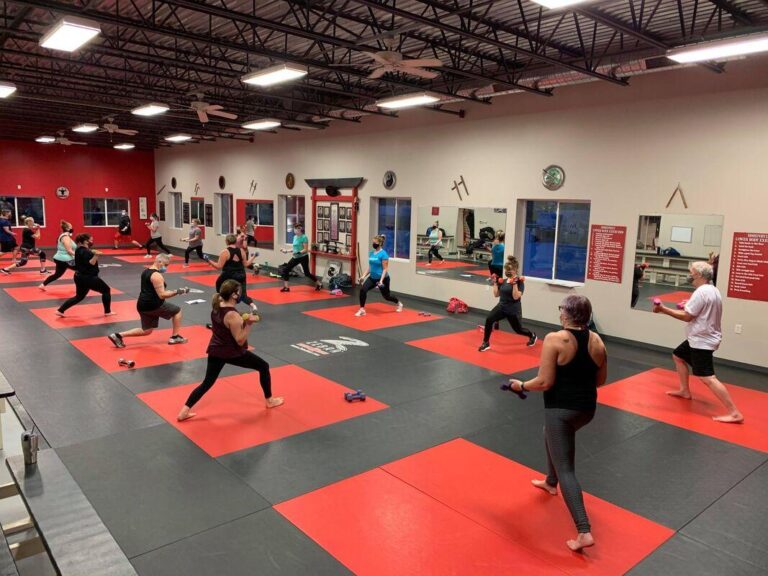Table of Contents
- Understanding the Connection Between Fitness and Effective Self-Defense
- Incorporating Strength and Conditioning Exercises for Enhanced Power
- Mastering Agility and Reflex Training to React Faster in Critical Situations
- Designing a Balanced Workout Plan Tailored for Self-Defense Readiness
- Concluding Remarks
Understanding the Connection Between Fitness and Effective Self-Defense
Physical fitness plays a pivotal role in enhancing one’s ability to protect oneself during a threatening situation. Strength, agility, and endurance are crucial components that empower individuals to respond effectively, whether it’s through delivering powerful strikes, evading attacks, or maintaining composure under pressure. Developing a consistent fitness routine that targets cardiovascular health, muscular strength, and flexibility equips the body to perform quick, decisive movements, minimizing the risk of injury and maximizing the effectiveness of defensive techniques.
Beyond physical capability, fitness training sharpens mental resilience and confidence, both of which are essential in high-stress self-defense scenarios. Incorporating workouts that improve coordination and reaction time can significantly elevate your ability to read and respond to an attacker’s moves. Key fitness elements to consider include:
- Explosive Power: For delivering impactful strikes and overpowering adversaries.
- Balance and Stability: Essential for maintaining control during physical confrontations.
- Endurance: To sustain energy levels during prolonged encounters.
- Flexibility: Allowing for greater maneuverability and reduction of injury risk.
Incorporating Strength and Conditioning Exercises for Enhanced Power
Maximizing your defensive capabilities requires more than technique alone; developing raw power through targeted exercises elevates your ability to neutralize threats quickly and effectively. Focus on compound movements like squats, deadlifts, and bench presses, which engage multiple muscle groups simultaneously, promoting explosive strength essential for powerful strikes and fast reactions. Incorporating plyometric exercises such as box jumps and medicine ball throws can further enhance your muscle’s ability to generate speed and force, translating directly to more impactful punches and kicks.
Consistency and proper recovery are crucial when integrating these exercises into your routine. Aim to include 2-3 strength and conditioning sessions weekly, carefully balancing intensity with rest to avoid overtraining. Initiate each workout with dynamic warm-ups to prime your muscles and joints, and finish with mobility exercises to maintain flexibility and reduce injury risk. Key components to prioritize include:
- Progressive overload by gradually increasing weights or resistance.
- Core strengthening to improve stability and power transfer.
- Explosive movement drills to build speed and reaction time.
- Functional training that mimics real-life defense scenarios for practical strength application.
Mastering Agility and Reflex Training to React Faster in Critical Situations
Refining your agility and reflexes isn’t just about moving quickly-it’s about cultivating a heightened awareness that allows your body to respond instinctively in moments of danger. Integrating dynamic drills such as ladder exercises, cone drills, and reaction ball catches into your routine will enhance your neuromuscular coordination, enabling you to execute rapid, precise movements when seconds count. Remember, the key to effective self-defense lies in your ability to seamlessly blend speed, balance, and sharp decision-making under pressure.
To truly elevate your responsiveness, focus on training methods that challenge both mind and body simultaneously. Incorporate reaction time drills where visual or auditory cues require split-second decisions, such as partner shout drills or light-up reaction boards. Coupling these with balance and plyometric exercises not only builds explosive power but also reduces the risk of injury during evasive maneuvers. Here’s a quick list to get started:
- Agility ladder sequences to improve foot speed and coordination
- Shadowboxing with unpredictable movement patterns
- Partner-based reflex drills focusing on hand-eye coordination
- Plyometric jumps to build explosive lower body strength
- Peripheral vision training using ball tosses or light cues
Designing a Balanced Workout Plan Tailored for Self-Defense Readiness
Creating a workout routine that targets both physical strength and functional movement is essential for boosting your self-defense capabilities. Focus on incorporating exercises that improve agility, explosive power, and endurance to prepare your body for real-world scenarios. Compound movements like squats, deadlifts, and push-ups build foundational strength, while plyometric drills enhance quick response times. Don’t overlook the importance of core stability and cardiovascular conditioning; a strong core supports better balance and efficient force transfer, and cardiovascular fitness helps maintain stamina during prolonged confrontations.
To achieve a truly balanced training plan, integrate the following elements to cover all bases of preparedness:
- Strength Training: Build muscle resilience and joint stability.
- Speed & Agility Drills: Sharpen reflexes and quick directional changes.
- Flexibility & Mobility Work: Prevent injuries and increase movement range.
- High-Intensity Interval Training (HIIT): Simulate fight-like bursts of activity with recovery periods.
- Technique Practice: Combine fitness with skill drills to translate power into effective self-defense moves.
Concluding Remarks
Incorporating fitness training into your self-defense routine not only enhances your physical capabilities but also builds the confidence and mental resilience needed to stay safe in challenging situations. By committing to regular workouts that focus on strength, agility, and endurance, you empower yourself to respond more effectively when it matters most. Remember, self-defense is not just about learning techniques-it’s about preparing your body and mind to protect yourself with agility and control. So, lace up your sneakers, hit the gym, and watch your self-defense skills reach new heights through the power of fitness. Stay strong, stay safe!Check Our Other Blogs
- StunGun – Your Trusted Source for Stun Guns, Laws, and Self-Defense Tips
- PepperSprayLaws – Your Trusted Resource for Pepper Spray Information
- StunGunLaws – Your Trusted Guide to Stun Gun Legality and Safety



